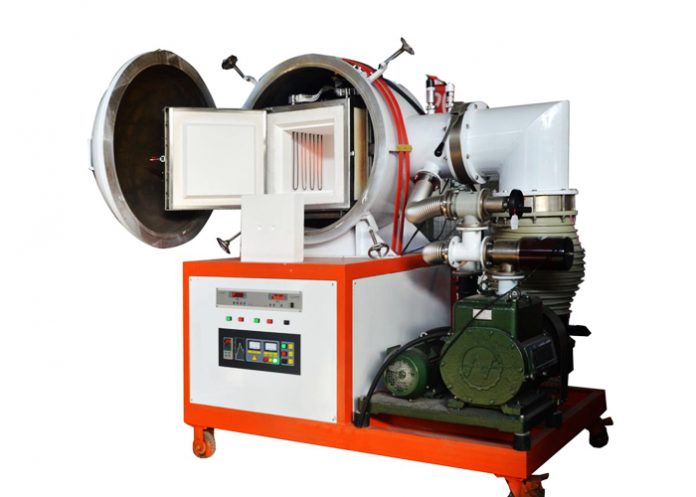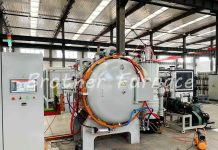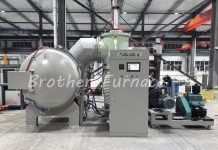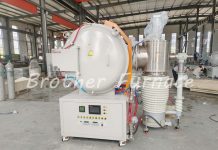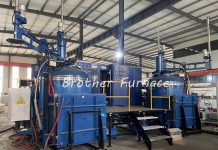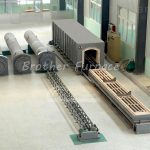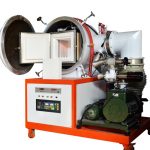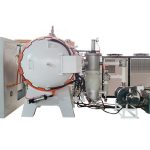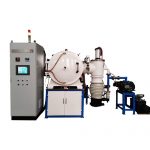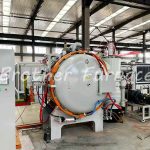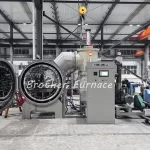As a professional high-temperature vacuum furnace manufacturer, we have summarized a lot of knowledge and experience related to vacuum heat treatment in our research and production, as well as in providing services for our customers. Starting from today, we will share some knowledge of vacuum heat treatment with you, hoping to help you in your experiments or production.
Vacuum Heat Treatment (1): what is vacuum heat treatment, the feature, how to choose the vacuum?
Vacuum heat treatment is a new heat treatment technology that combines a vacuum working environment with heat treatment technology. The vacuum working environment of vacuum heat treatment is less than one standard atmosphere (1.013×105 Pa).
- Low vacuum (105 ~ 102 Pa)
- Medium vacuum (102 ~ 10-1 Pa)
- High vacuum (10-1 ~ 10-5 Pa)
- Ultra-high vacuum (< 10-5 Pa)
Features of vacuum heat treatment
The workpiece is heated under vacuum to avoid oxidation and decarburization of conventional ordinary heat treatment, avoid hydrogen embrittlement, relatively small deformation, and improve the comprehensive mechanical properties of material parts. The life of the workpiece after vacuum heat treatment is usually dozens or even hundreds of times longer than that of ordinary heat treatment.
There are three main ways of heat transfer in materials: conduction, convection, and radiation. The heating environment under vacuum is an extremely thin atmosphere, so there is no oxidation and decarburization of the workpiece. At the same time, it is only a single way of heat transfer, the size of radiation heat and temperature into a quadratic proportion: E = C (T/100)4, so the vacuum heating is slow, but because there is almost no heat loss, the heating body heats up quickly, the temperature difference between the surface and the heart of the workpiece is not very large, relatively speaking, the workpiece deformation is also small.
At the same time, we analyze from the above formula, within the vacuum stage, rely on radiation a heat transfer heating, low-temperature radiation effect is poor, in the high-temperature stage radiation effect is better. The phenomenon will be used in the future when the process parameters are developed.
How to choose the vacuum
When materials are vacuum heat-treated, the reasonableness of the vacuum degree should be taken into consideration. Alloying elements such as Mn, Ni, and Cr will volatilize when heated in a vacuum, and the volatiles will make the workpiece bonded to the material basket screen, which is inconvenient to take out; also the volatiles will pollute the vacuum system such as heating furnace chamber and vacuum pump. Therefore, when starting heating, we should pay attention to the vapor pressure of various metals, and it is best to pass 1~2kPa high purity nitrogen if allowed. The purpose is, firstly, to reduce the volatilization of alloy elements; secondly, to improve the vacuum heating speed and reduce the vacuum heating lag time.
In the vacuum heating environment, the working vacuum degree selection principle is a high vacuum for low temperature, low vacuum for high temperature. our decision on the vacuum degree is not only the workpiece but also depends on the equipment life. If the vacuum heating furnace chamber is made of graphite, the lack of vacuum will reduce the life of graphite and increase the cost a lot.
- For most low alloy steel and high chromium steel, vacuum heating, in general, can choose 1.33 ~ 12.3 Pa.
- But for high carbon and high alloy steel, the vacuum level should be 1.33×10-2Pa.
- For carbon steel, the vacuum level should not be lower than 1.33×10-2Pa.
- For heating under high temperature and high vacuum conditions, such as materials containing titanium and tungsten, their heating temperature is almost 1250 degrees, and the vacuum level should be controlled at about 1.33×10-2Pa.
- In order to prevent some elements from volatilization and workpiece bonding, a little high purity nitrogen should be added at a high temperature to increase the furnace pressure. In fact, the vacuum level should be at least 6.67×10-1Pa before heating up at the beginning.
To be continued…
Check out our Vacuum Furnace in details
Follow us on Facebook

